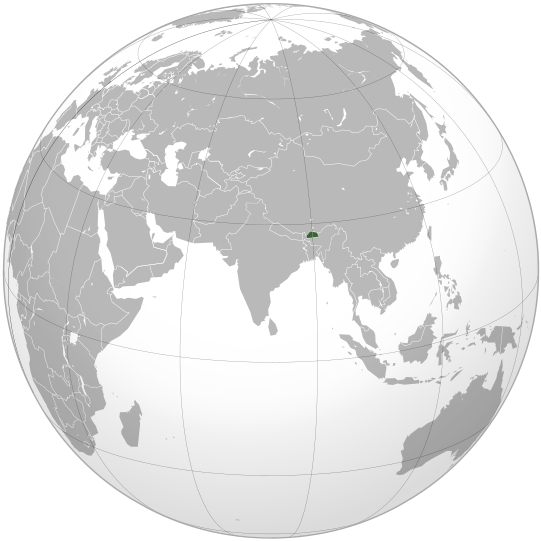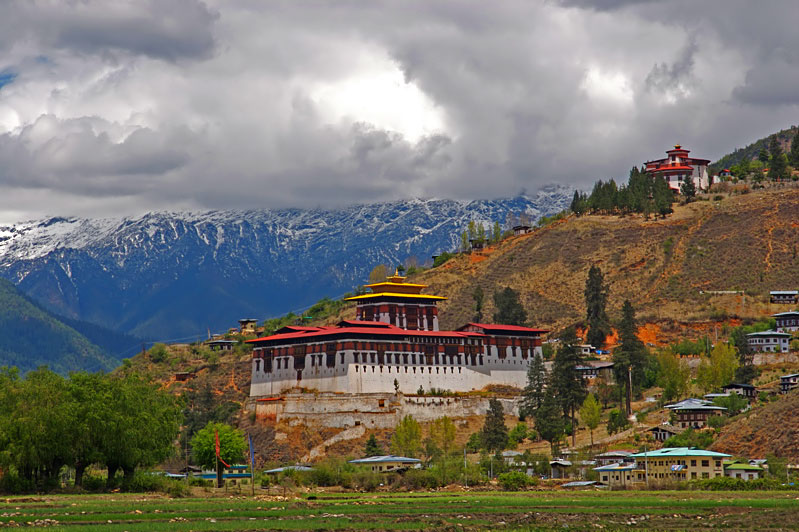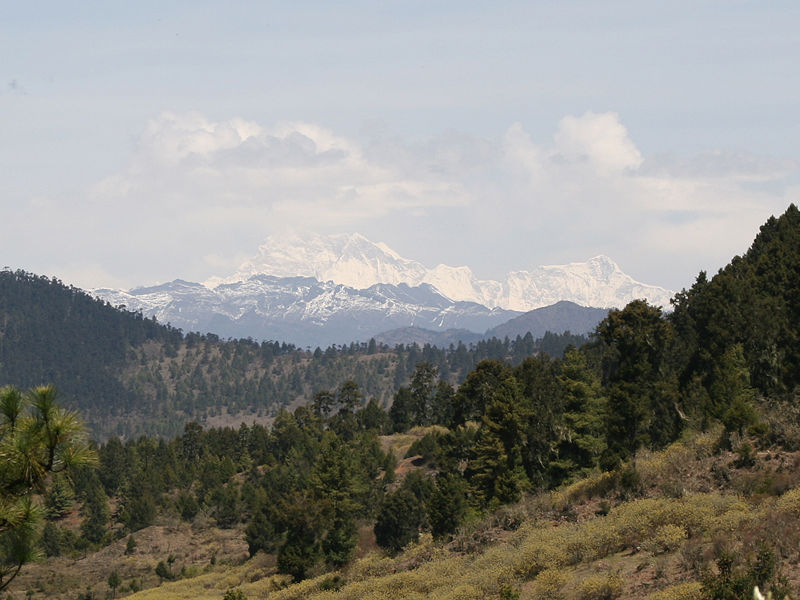Economy of Bhutan




Bhutan is a small country located in the eastern Himalaya. It is a beautiful place with mountain peaks, hill ranges, varied vegetation, gushing rivers, waterfalls, rapids and colorful wildlife. The neighbors are two giants India and China. The northern flank is covered by Tibet. The southern flank is covered by West Bengal. The western part is covered by hill state of Sikkim. The eastern part is covered by Arunachal Pradesh and Assam. The area of Bhutan is around 38394 sq.km. The 1012 census population of Bhutan is around 755000. The GDP of Bhutan is 4.287 billion dollars. The per capital income is 6112 dollars. The capital city is Thimpu. Bhutan is a kingdom with constitutional monarchy. Bhutan has an elected government. The king is the head of the state. The prime minister heads the government of Bhutan. He is assisted by the councils of ministers. The prime minister is the leader of the parliament. The Parliament has two houses as the National Council and National Assembly. Election is held to the National Assembly every 5 years. Bhutan is divided into some regions and districts. for administration. The important districts of Bhutan are Thimpu, Chukha, Punakha, Sandrup, Jongkhor, Sarpang, Paro, Trashigang, Wagdue-Phodrang Dagana, Trongsa, Bhumthang, Tsirang and Bhumthang. The important towns are Thimpu, Damphu, Jakar, Mongar, Paro, Phuentsholing, Punakha, Samdrup Jongkhar, Trashigang and Trougsa. Majority of the Bhutanese people follow Buddhism. There is some Hindu population in Bhutan. Local folk religion and other religions are also followed by some section of the population. The people speak mostly the Dzongkha--Tibetan language. Some people also speak Nepali and Tshangla language. Education is given priority in Bhutanese society. Primary and secondary schools are there in many places. The medium of instruction is mostly in local language. The higher education is provided through some colleges .The Royal Bhutan University controls and coordinates the higher education in Bhutan. This university also provides facility for postgraduate education. Importance is given on technical education to produce quality technical graduates for serving the society.
Now importance is given on healthcare facilities. District hospitals are established in all districts. Model hospitals are established at Thimpu, Paro and Phuetsholing. India extends help to Bhutan in education and health care sector. International bodies like Red Cross and UNICEF also help Bhutan to improve its health care system. The people of Bhutan are very peaceful and strongly follow the teachings of Buddha. Buddhism came to Bhutan from Tibet .The Buddhist monk of Tibet, Rimpoche came to Bhutan and spread Buddhism among the local people. The concept of Gross National Happiness is developed in Bhutan. Bhutan is famous for its Buddhist monasteries. Bhutan is also known as Druk yul. It is the land of Drukpas. People migrated to Bhutan from Tibet, Sikkim, Nepal, Assam and Arunachal Pradesh. Buddhism was introduced in 7th century A.D.There were some chiefs and chieftains, who controlled various parts of Bhutan. The present Wangchuk dynasty was first established during 1907.After that period the whole of Bhutan was consolidated into one kingdom of the present shape.The monarchy continued till now. During 2002 a constitution was adopted and accordingly democracy was established in Bhutan. The king became the constitutional head of the state. Parliament is established to govern the country. Election is held every five years. Prime minister is the head of the government and leader of the Parliament. The parliament has two houses as the National Council,and National Assembly. the Present form of government is doing well and the people are closer to the development process carried by the Government of Bhutan. The physiography of Bhutan is marked by high mountains, hill ranges, meandering rivers, rapids, waterfalls, narrow river valleys and alluvial low lands. The northern part is full of mountains with snow cover and glacial flows along the slopes .Most of the peaks are more than 7000 m high above mean sea level. The highest peak is Gangkhor Puensum with an elevation of 7570 m above mean sea level. This part of Bhutan is yet to be properly explored by climbers and nature lovers. The central region has mountain and hill ranges. This region is also known as black mountain region. The elevation varies from 1500 m to 4925 m above mean sea level. The southern part is covered by foot hills and alluvial plains. Beautiful rapids and water falls are found all over Bhutan. Bhutan is also known as the abode of God or the land of God.
The climate of Bhutan varies from one part to another part. The southern part has a sub-tropical climate. The central high lands have temperate climate. The north experiences polar climate and gets snow fall in many places. The western and eastern part get heavy rain fall. The central and southern part of Bhutan get sufficient rain fall. A number of streams and rivers originate from the mountains and hill ranges of Bhutan. The important rivers are Torsa, Raidak, Sankosh, Manas, Mochhu and Dragmo chhu. All the rivers flow to the south and south east direction. These rivers join the Brahmaputra river system before being drained into the Bay of Bengal. Due to variation in climatic conditions, the forests are also varied in Bhutan. The Himalayan Alpine shrub and meadows are found in north Bhutan. The forests are sparse on higher altitude. Sub Alpine conifer species are found on higher elevation. Sub Alpine conifer species are found on higher elevation. The eastern and central parts are full of broad leaf species. Sub-tropical broad leaf species are found in eastern region and central region. Sal forests are found in south Bhutan. Some patches in south contain grass land. More than 6000 forest species are found in Bhutan. Rhododendron, Orchid, Fern and flowering plants are found in some pockets. Varieties of wild life are found in Bhutan.tiger, leopard, clouded leopard, sloth bear, sambar and rhinoceros are found in southern Bhutan. Snow leopard, barking deer, wild pig, Tibetan wolf, Musk deer, takin, red panda, serrow, goral,and grey langur are found in western and central Bhutan forests. Varieties of birds and reptiles are also found in the forests of Bhutan. Protected areas are home to wild life, vegetation ,orchids and ferns .Some protected areas are conserved on priority basis.These are Jigme Dorji National park,Royal Manas National park, Jigme Singye Wangchuk National park, Torsa strict Nature reserve, trum shingla National park, Bumdeling Wild life sanctuary, Sakteng Wild life Sanctuary, and Wangchuk Wildlife Sanctuary .A number of reserves are there for nature lovers and ecotourism .
Bhutan is famous for its old palaces, monasteries, gompas and Buddhist monuments. Some of the areas were not accessible to common people due to lack of road network and communication facilities. Slowly the infrastructure facilities are developed all over Bhutan. The tourist destinations are being connected to high ways on priority basis. Road bridges, hanging brides, culverts and rope ways are installed at many places. For air travel and international links the Paro International airport is developed. Domestic and international flights are operated from this airport. Regular flights are operated from Paro to Kolkata, Delhi, Mumbai, Bangkok, Singapore and Dhaka. The national carrier Druk Air is connected to all these cities. There is a private airline named Bhutan Airlines operates from Paro to Singapore and Paro to Bangkok. Adomestic airport at Youngphulla near Trashigang is operated for the domestic flights. Two new airports at Bathpalathay in Bumthang district and Gelephu in Sarpang district are under construction for domestic operation. The national highways are connected to national highway of India near Silguri in West Bengal.Railway link is to be established with the Indian railway.
The economy of Bhutan is based on agriculture, forestry, animal husbandry, food processing, handicraft and tourism. Agriculture contributes around 30 percent of the GDP. Organic farming is in operation in many parts of Bhutan.Bhutan has mineral resources like limestone, dolomite, gypsum, asbestos and quartz. Some medium scale industries like cement, carbide, steel, ferrosilicon,ply wood, panel,saw mill,packing box and food processing are established and operated in Bhutan.Hydro power is generated at Chukha with Indian collaboration. The present power generation capacity in Bhutan is 1500 MW. The hydro power potential in Bhutan is estimated at 50000 MW.Power is supplied to all parts of Bhutan .Some power is exported to Indian power grid. India is the major trading partner of Bhutan. Around 75 percent of trading is with India. Other important trading partners are Japan and Sweden. The currency of Bhutan is Ngultrum. It is connected to the Indian Rupee. The Indian rupee is also accepted as legal tender in Bhutan. A number of festivals are observed in Bhutan. A number of tourists come to Bhutan to see the nature, forests, wildlife and monuments. Climbers and trekking parties visit the hills and mountains. One should visit Bhutan to be part of Himalaya and its ecology.